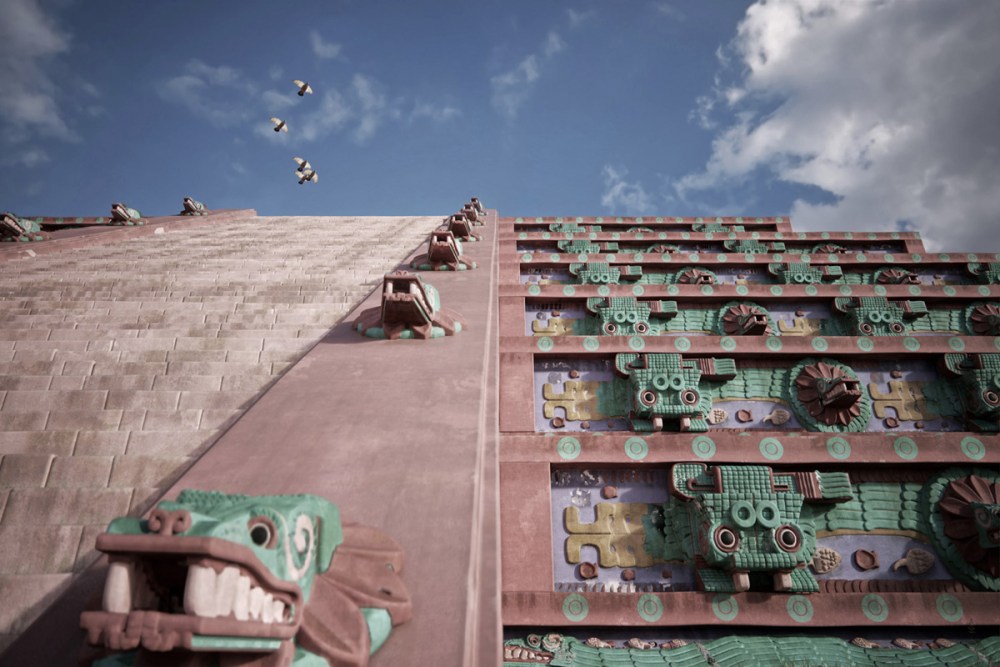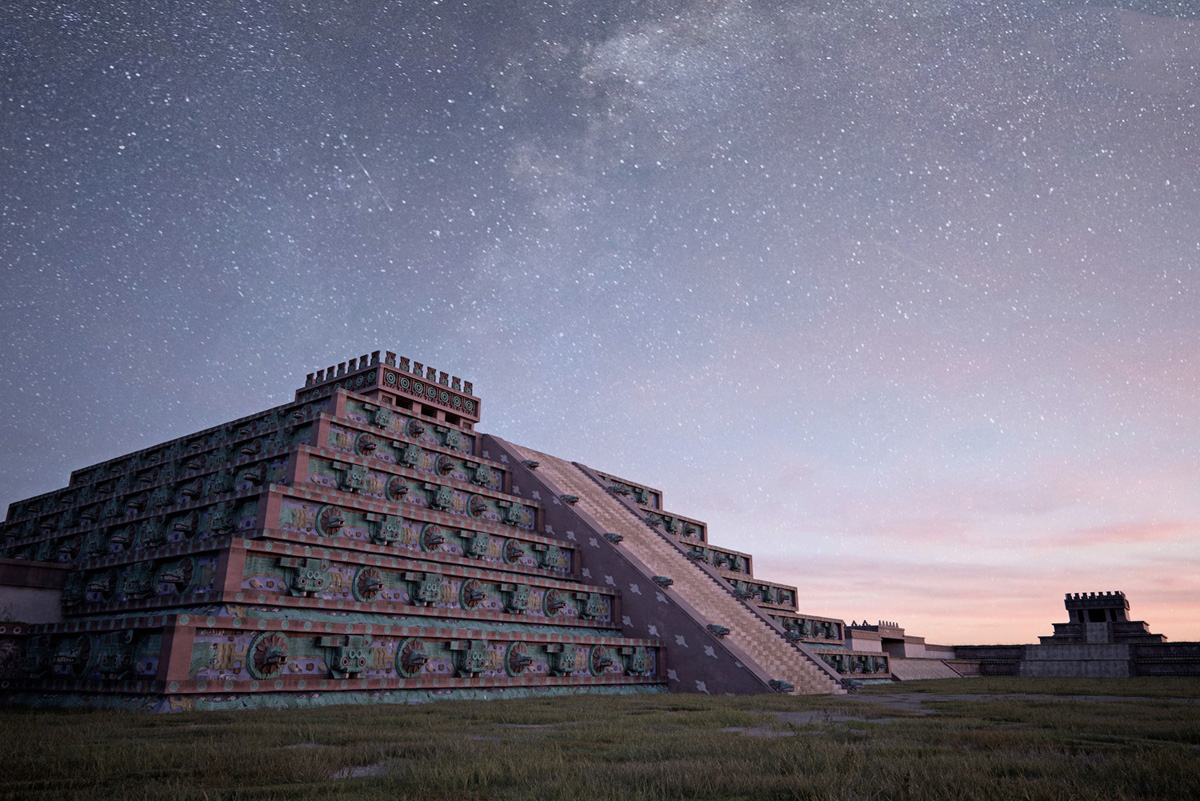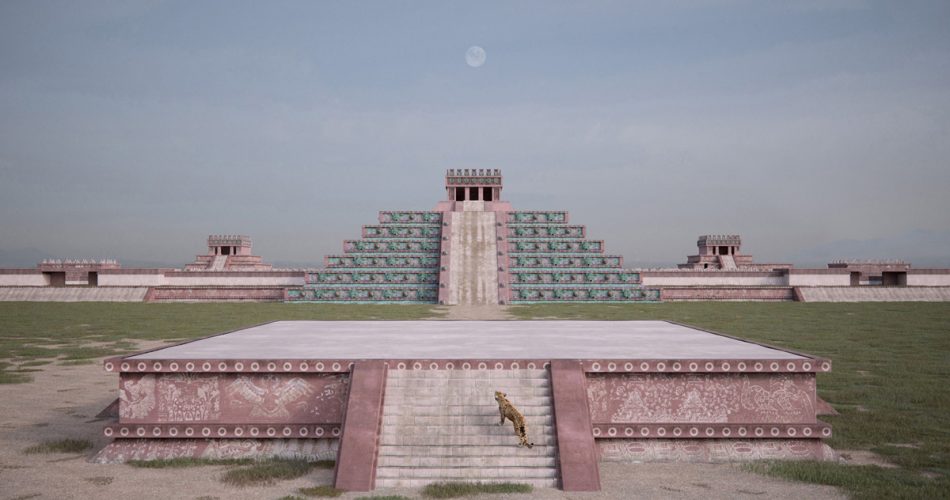Check out this stunning recreation of architect/artist David Romero, as he takes on a journey of what Teotihuacan, Mexico’s most famous pyramid-city, may have looked like more than 1,500 years ago.
Located in the State of Mexico, around 45 km northeast of the Mexican capital, we find the ruins of the ancient city of Teotihuacan. Its a city worthy of gods, and its name reflects that: Teōtīhuacān is a name given to the ancient ruins by the Nahuatl-speaking Aztecs centuries after the fall of the city. It translates into “birthplace of the gods”, or “the place where gods were born.”
Teotihuacan stands out for its impeccable planning –aligned with the cosmos– and at its peak, in the 6th century, it was the home of around 150,000 people, becoming an economic, political, and cultural epicenter in the heart of Mesoamerica. Although we’ve studied the ancient city, its temples, and pyramids for decades, we’ve not made much progress. We still don’t know when the city was created, who founded it, what its original name was, and how its massive pyramids were built.
Everything that is known of one of the first Mesoamerican metropolises is based on the interpretations that the Mexica made of the site and on vestiges and paintings left by its ancient inhabitants, who left the city in the 7th century.
The knowledge that has been collected over the years is so much that, with the intention of making a visual reconstruction of what is known until now, the architect and 3D artist David Romero digitally built and decorated the city.
He recreated in detail three of its most emblematic structures: the Pyramid of the Sun, the Pyramid of the Moon, and the Citadel, and the result is a never-before-seen view of one of Mesoamerica’s lost cities.

Bringing Teotihuacan back to life
To achieve accuracy and represent Teotihuacan as best as possible, Romero had the help of researchers from INAH and ENAH. On one hand, it respected the forms and elements that are known to have been part of the image of the city, such as the slope-board style of the pyramids. On the other, he took some liberties in aspects that are not yet clear, for example, it is not yet precisely known if the feathered serpent pyramid structure had six or seven floors, so the artist chose to recreate da step pyramid of six superimposed structures.
His sources of inspiration were jaguars and other animals that haunted the territory 1,500 years ago. On the other hand, it was also based on the large fresco murals present in four residential complexes that surrounded the ceremonial area: Atetelco, Tepantitla, Tetitla, and La Ventilla.
Teotihuacan features numerous stunning illustrations dating back over 1,500 years. However, some of the paintings were damaged by the pass of the centuries, but others have been carefully restored by experts who even support the use of colors such as blue, black, red, and white.
The compositions represent more than anything scenes from daily life, the cosmogony, and the deities of the ancient inhabitants. There are even some pieces that indicate the presence of Mayan nobles in Teotihuacan, as they contain characteristic glyphs from the southeast.

An artist’s recreation of one of the pyramids at Teotihuacan. Image Credit: David Romero.
A city of gods
Teotihuacan was a city truly worthy of gods. It was the largest city in pre-Columbian America and was home to hundreds of thousands of people. Experts argue that during its zenith, it may even have been one of the six largest cities on the surface of the planet.
Home to three striking pyramids which are the city’s symbol, Teotihuacan is also home to the Avenue of the Dead; the central road of 45 meters wide and a length of 2 kilometers. It is called “Avenue of the Dead ” (Avenida de Los Muertos) because it was thought to have been paved with tombs. This notion was introduced by the Aztec who confused the smaller talud-tablero platforms for tombs. However, these were not tombs but ceremonial platforms atop which temples once stood.
Home to the Pyramid of the Sun, the Pyramid of the Moon, and the Temple of the Feathered Serpent of Quetzalcoatl, Teotihuacan is home to elaborate monuments. Its Pyramid of the sun, the largest monument in the city, is considered one of the five largest pyramids in the world in terms of volume.
To see the entire collection (there are many other images) click here.

